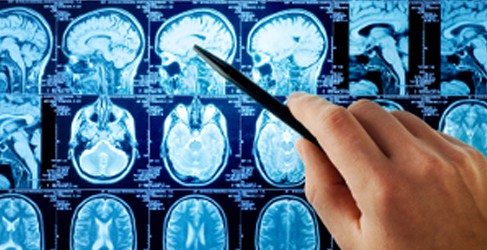
Children raised in poor households have clear differences in the physical structures of their brains compared to wealthier children, a new study finds. The effects were most striking among the poorest families who took part in the study, where even modest changes in wages could have a significant impact on the structure of the children’s brains.
This is important because the brain regions involved are crucial for the development of language, memory and reasoning skills, making them central to a child’s potential to thrive at school and gain a good education.
“We’ve known for a long time that kids from lower-income or disadvantaged families don’t do as well in school and have more difficulties on standardized tests,” Dr. Elizabeth Sowell, a senior author on the study and director of the developmental cognitive neuroimaging lab at Children’s Hospital, Los Angeles, told The Huffington Post. “We know that the brain is driving cognition and behavior, so there must be some difference in the brain. This is the largest study to look at things like family income and the size of the brain.”
For the study, the researchers scanned the brains of more than 1000 children aged three to 20 years old and, after taking genetic factors into account, found that the surface area of the children’s cerebral cortex tended to expand as family income rose. The surface area of the cerebral cortex was, on average, 6% larger in children from families with an income greater than $150,000, when compared to families earning $25,000 or less. Higher family income was also associated with better performance on tests of executive function.
The parents’ education had an impact on their children’s brain structure too, with scans revealing a larger hippocampus in children from more educated families. The hippocampus plays a pivotal role in short term memory and spatial navigation.
‘The case for investment in society’s poor children is very strong’
The study, published in Nature Neuroscience, cannot say categorically what causes the brain changes, but the scientists behind the research believe they reflect differences in the environment in which the children’s brains develop. A multitude of factors likely come into play: the children may experience more stress, live in more polluted areas, have less cognitive stimulation in their daily lives, and their mothers may have had poorer diets while pregnant.
“We know that experiences in the environment impact the way the brain wires itself through childhood and adolescence,” Dr. Sowell told The Huffington Post. However, she emphasized that their findings do not mean that a child’s future cognitive or brain development is predetermined by socioeconomic circumstances.
“The brain develops over a very long period, throughout childhood and adolescence,” Dr. Sowell told Science. Enriching the environment of a child “at any point in development” can make a big difference in his or her abilities, and may change the trajectory of brain development for the better, she said.
Dr. Martha Farah, a cognitive neuroscientist at the University of Pennsylvania, told Science that the study is “a real advance in characterizing how brain development differs” between children of lower and higher socioeconomic status, calling it a “crucial first step” in understanding how income and education levels “shape human development.”
Importantly, said Dr. Farah, the study provides additional, compelling support for the idea of alleviating childhood poverty. “Even without neuroscience, the case for investment in society’s poor children is very strong,” said Dr. Farah. “But if brain imaging helps to focus people’s attention on the problem of childhood poverty, that’s great.”
‘Poverty may be the greatest barrier to a child attaining his or her full academic potential’
The scientists hope that their findings will help to drive fresh interventions to boost brain growth in children who need it most. They could include targeted activities at school and at home; easier access to further education, which often leads to higher incomes; or simply more generous benefits for the poorest families.
“Poverty may be the greatest barrier to a child attaining his or her full academic potential,” lead researcher Dr. Kimberly Nobles, of Columbia University, told the Wall Street Journal. But, she said, “by identifying how income affects early child development, we hope to inform anti-poverty policies that better support children’s well-being,” For example, even “modest increases in family income, through experimental anti-poverty studies or tax benefits, often lead to improved achievement and schooling outcomes for low-income children,” she said.
Dr. Noble’s lab at Columbia is now planning a major trial to investigate whether giving monthly payments to the poorest families boosts the brain development of their children, by alleviating some of the factors that hamper it. Under the trial, a group of low income mothers from across the US will receive either a large monthly sum, or a modest payment, to see whether the money makes any difference to their lives. Noble says the results will directly inform public policy on the generosity of benefits to low income families with young children.
According to a recent report from UNICEF, the U.S. has one of the highest rates of childhood poverty in the developed world, despite being one of the richest nations on earth. The National Center for Children in Poverty estimates that more than 16 million U.S. children live in families with incomes below the federal poverty level, and for the first time in modern history, more than half of U.S. public school students live in low-income households. Unfortunately, some of the most effective anti-poverty programs in existence — like food stamps, subsidized school lunches, and Medicaid — are under attack by Republicans in Congress, who are pushing to authorize devastating cuts to these essential lifelines.
